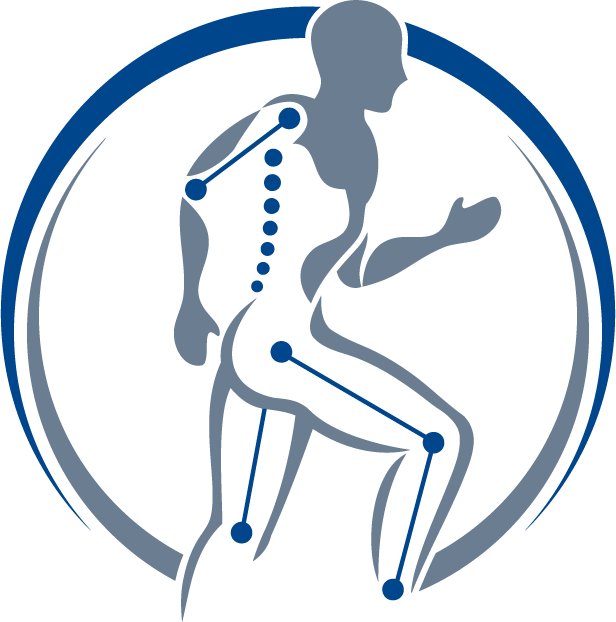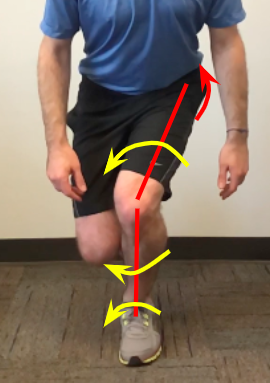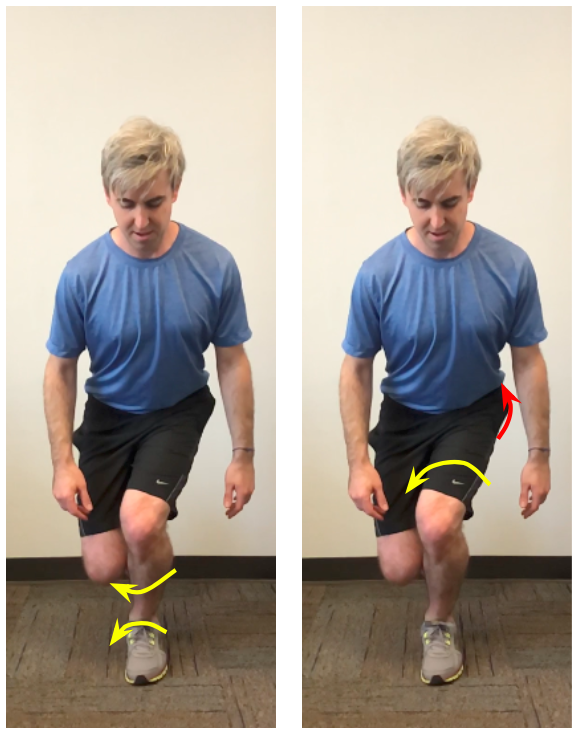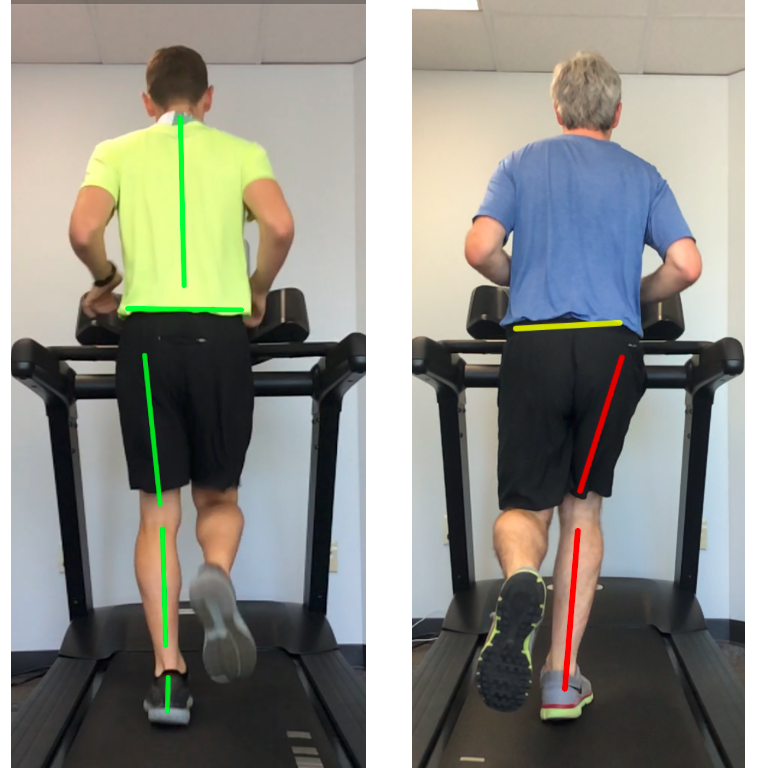Running: Dynamic Knee Valgus
Limited ankle range of motion and gluteal weakness: two of the most common contributors to injuries that we see in runners. These impairments often lead to a movement pattern called dynamic knee valgus and knee pain in runners. This is especially true in those who are new to running or returning after a long break. This blog will describe the knee valgus pattern: What is it? How do you fix it? Why does it matter?
What is knee valgus?
When the knee moves in an ideal way, the upper leg, lower leg and foot all move in approximately the same plane. (Of course there are exceptions to this rule, but this is true for most). When the knee turns inward of the foot, it creates a twisting or shearing force on the joints and they are no longer moving within the same plane. When a person moves into this pattern with running, squats or stairs we call it dynamic knee valgus. This article is based on dynamic (not static) knee valgus.
Left Side: Notice how the knee and foot are pointing in different directions. Right Side: Notice the increased angle created between the upper and lower leg.
Why does it happen?
Limited ankle range:
When the ankle does not bend enough, your body has to compensate by moving somewhere else. Therefore the arch of the foot rolls inward (in most people), causing your lower leg to rotate and the knee turns inward.
Gluteal Weakness:
The gluteals and small muscles around the hip control the upper leg rotation. When they are weak the femur (within the thigh) rotates inward. When this rotation occurs from the upper leg, you can see the knee turn inward.
Left Side: Knee valgus driven from limited ankle dorsiflexion and increased ankle pronation. Right Side: Knee valgus driven from poor gluteal strength causing hip adduction and internal rotation.
Do I have a knee valgus pattern?
The easiest way to assess yourself and see if this may be present in your running form is through slow motion video on your phone - you can take your video this way. You may also assess your movement in a single leg squat where the raised leg is behind you.
Left Side: Athlete without dynamic knee valgus. Right Side: Athlete with dynamic knee valgus.
Practice looking for knee valgus while running this slow motion video.
Practice looking for knee valgus during a single leg squat in this slow motion video.
Why does knee valgus matter?
The knee is a hinge joint, imaging a hinge when a door opens and closes. The knee should open and close, or flex and extend. If you were to twist a door on the hinge as you open and close it you can imagine how the hinge and screws would be stressed. When the knee twists and turns in (valgus) during the hinge motion the ligaments and tendons (meniscus, ACL, collateral ligaments, patellar tendon) have higher stress. Additionally, it can contribute to patellofemoral pain, often called “runner’s knee.” In the short term, this pattern can lead to aches and pains in the joint. Long term, these excessive motions may contribute to osteoarthritis.
Don’t worry if you see this pattern in yourself, it can be corrected with exercises and practice. Changing dynamic knee valgus on your own can be challenging, come see us in the clinic if you would like a custom plan.
To your movement health,
Ann & Jesse
Precision Physical Therapy is currently accepting new patients. schedule an evaluation here.
This blog is not intended as medical or professional advice. The information provided is for educational purposes only and is not intended to serve as medical or physical therapy advice to any individual. Any exercise has potential to cause injury or pain if it is incorrectly done or is not the right exercise for an individual’s medical or physical problems. You should consult with a physical therapist or medical provider for individualized advice.




